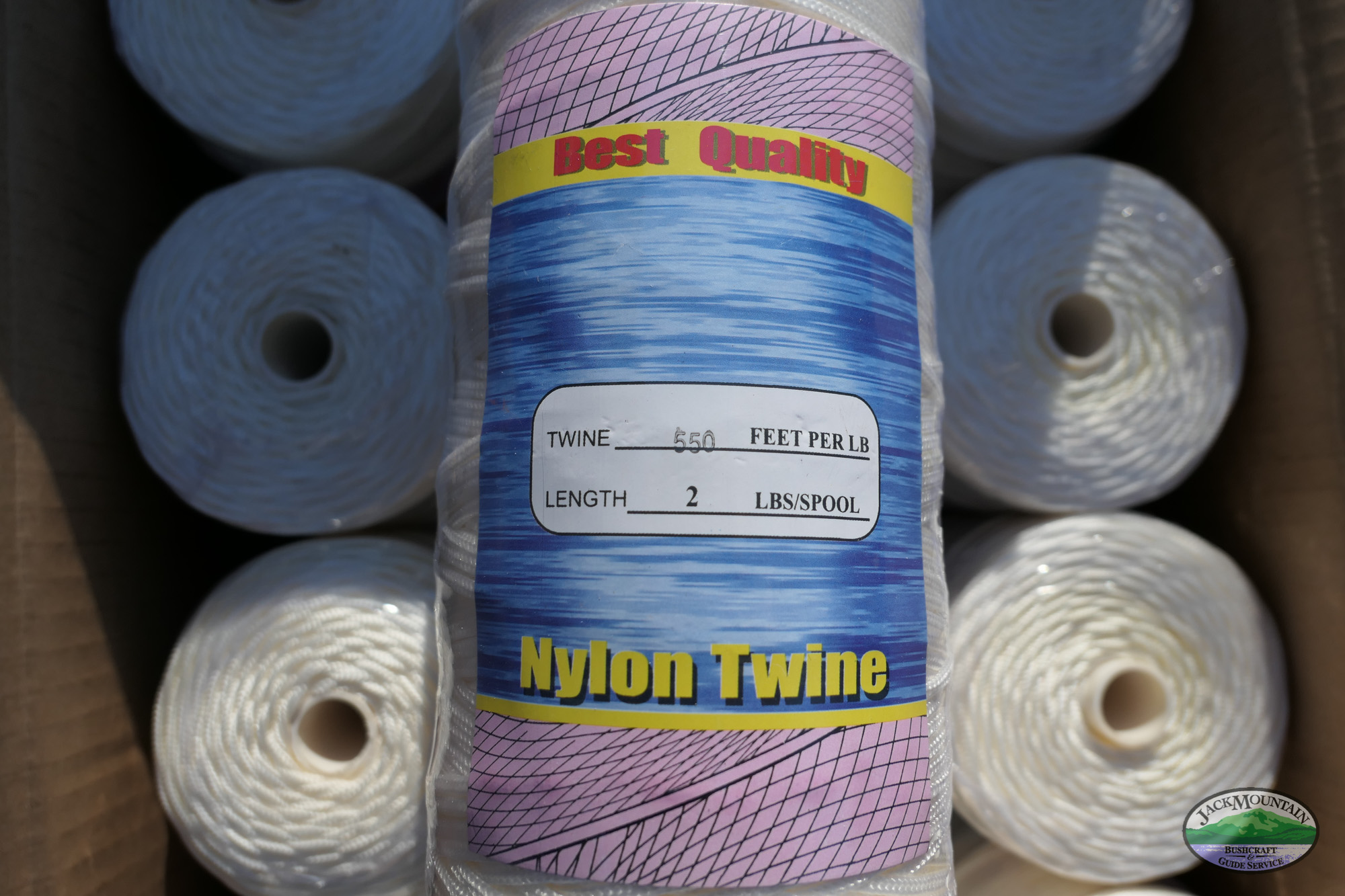Paracord was and continues to be the go-to cord in bushcraft and survival circles, but I never use it on our courses or expeditions. Instead I use string from the commercial fishing industry; a braided nylon. You can’t take it apart and use the small, inside strings for different things, but it holds up better over time in my opinion.
The stuff I use and recommend is a braided nylon, known as 550 header twine.
550 nylon twine from New England Marine & Industrial
Unlike 550 paracord, the 550 number here doesn’t indicate tensile strength; it’s a measure of how many linear feet are in one pound of it. Armed with this knowledge, you should also know that the #400 braided nylon is great for setting up heavy canvas tents (big base-camp tents such as 12×14, etc. – the #550 is all I use for my 10×12 tents). And that the tarred twine is great for making nets, with the tar giving it an extended life span. And the #750 is smaller and great for crafts. They price all the cord by the pound, weighing each spool. For me, the 10-15% stretch in the nylon is a benefit, not a curse. If you want one that doesn’t stretch, go with the braided dacron 550.
Twine page at New England Marine And Industrial
The spools they sell are 2 pounds, so with the #550 you get 1100 feet for $13. In addition to being tougher, this is much less expensive than paracord.
This is my opinion, never tested except by using miles of this stuff over 20 years. I trust it. And unlike the fake paracord that fills the shelves at stores, I don’t have to worry if this is the genuine item or a cheap knock-off. Life is hard out on the North Atlantic. If it works out there under all conditions, it will probably work for you in the woods. It works for me.
Note: I wrote about this topic in a blog post in 2009. This is an update.








